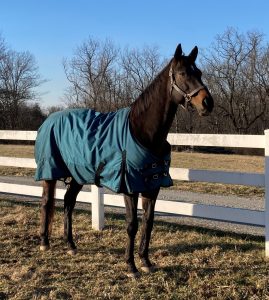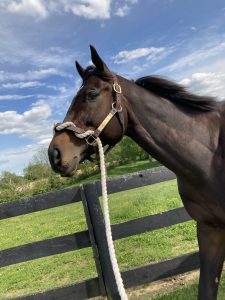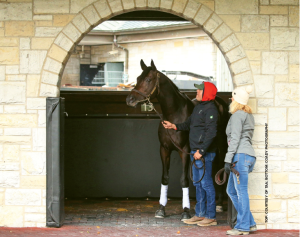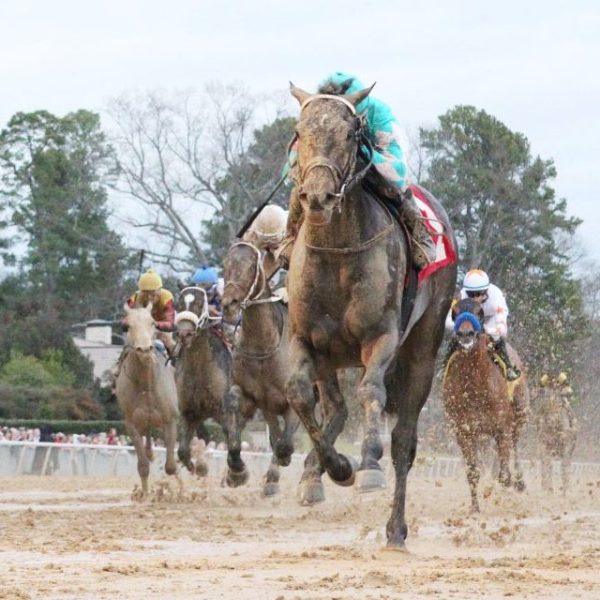If you own a Thoroughbred in training, you most likely have heard of the many aftercare options available to you and your racing community.
With 82 Thoroughbred Aftercare Alliance (TAA)-accredited organizations across North America and many supporting triage programs at major racetracks, the transfer of a retiring Thoroughbred can be seamless.
One concern in this process is ensuring a retired horse will not be entered in a race under new connections. Often a retired horse will be transferred from the track to a trainer or an organization, but the foal certificate is left active. This misstep is a liability for the racing connections, but more importantly, it can be a threat to the horse’s safety. There are protocols in place to prevent this from happening.
All TAA-accredited organizations have an adoption contract, which states the horse is being sold as “Not for racing.” However, the process that officially ensures the horse’s Jockey Club certificate will be made inactive for racing must be filed through The Jockey Club’s Registry Office.
The Jockey Club registrar Rick Bailey explained the “Sold as Retired From Racing” process, which notifies North American racetracks of the retired status for Thoroughbreds.
“If an owner wishes to mark their certificates as ‘Retired From Racing,’ there’s a process to do that for Thoroughbreds that are registered with The Jockey Club,” Bailey said. “It involves returning the completed form, which includes the notarized signature of both parties, photographs so that we can verify the identity of the horse, and The Jockey Club Certificate of Foal Registration to our office so that it can be recorded and stamped accordingly.”
All of the necessary information and the “Sold as Retired From Racing” form are readily available online at www.registry.jockeyclub.com/registry.
“Some tracks are more aware of the retired process than others—certainly the aftercare organizations are much more aware and a good number of the ‘Retired From Racing’ horses that we receive are from aftercare facilities,” Bailey said.

My Boy Jack My Boy Jack living the retired OTTB life with his adopter
A seasoned veteran of the “Sold as Retired From Racing” process, TAA-accredited Second Stride executive director Kim Smith shares her perspective as an aftercare facility taking in recently retired Thoroughbreds who still need their TJC papers to be stamped as inactive.
“Second Stride transitioned 143 Thoroughbred sport horses to new homes last year for many types of post-racing uses and jobs,” Smith said. “We received foal certificates from the donating connections either digitally or in hard copy for approximately 40% of the horses.”
TAA-accredited organizations such as Second Stride sometimes face a challenge in tracking down the Certificate of Foal Registration.
“Often the papers are at a racetrack already closed for the meet. They’re left behind or transferred to the next track,” Smith said. “We often hear they were left in a van driver’s glove box.
“So far this year we have had four out of 20 horses arrive with foal papers and a notarized form ready for executing to The Jockey Club ‘Sold as Retired From Racing’ database,” Smith said. “This year we started sending The Jockey Club ‘Sold as Retired From Racing’ form link to all our donors; we ask it be executed upon entry.”
With the introduction of digital certificates, beginning with the 2018 foal crop, thankfully this issue is on the decline as Thoroughbreds with paper certificates age out of racing.

My Boy Jack in retirement
Aside from the ‘Sold as Retired From Racing’ form, TAA-accredited organizations take additional precautions to provide a safety net for horses adopted from their organization.
“We provide strict ‘No Race’ language in our adoption contracts,” Smith said. “Second Stride places our horses in the Equibase Virtual Stable Mail to be notified if a horse has published works or races. We then can proactively try and find out what is going on for any alerts. Usually it is a name similar to that of another horse currently working. This past Thanksgiving morning we had 2018 Kentucky Derby (Presented by Woodford Reserve [G1]) runner My Boy Jack show up with a published work. He was transitioned through our program and his adopter actually allows us to use him as an ambassador horse on tours, so we knew right where he was. We were able to reassure the prior connections that he was well and grazing on the farm.”
Many TAA-accredited organizations also are careful to safeguard their adopted horses from going to slaughter by having clear language in their adoption contracts. Furthermore, the adopter agrees to include the same “No race or slaughter” language in any future sale contracts.
“The adopted horse is placed with a lifetime ‘Not for race or slaughter use’ clause,” Smith said. “The adopter agrees that neither they, nor any future person or owner, shall race or slaughter the adopted horse, sell the adopted horse for race or slaughter use, or cause the horse to become available for purchase at an auction that could place the horse at risk of slaughter or race use.”
While it is trickier to reclaim an OTTB at-risk of slaughter, Kim Smith’s team has a solid plan in place if an adopted horse shows up on the track.
“The ‘bat’ phone starts ringing,” she said. “We would immediately notify the stewards of the related tracks, the track ownership, the track vets, and The Jockey Club. We can readily provide our paperwork and vet work to establish the situation and request the horse be put on the steward’s/track’s ‘No race’ list. We can also request that our attorney submit a ‘cease and desist’ letter to the person(s) in question, as well as to the other related parties. Our contract language also has provisions for return of the horse to Second Stride, and legal work can be started for that as well.”

(Photo: Coady Photography) My Boy Jack at Keeneland in 2019
While TAA-accredited organizations do their best to provide a safety net for our industry’s athletes with or without the “Sold as Retired From Racing” form, the nonprofits end up spending considerable time, money, and resources that could otherwise go toward caring for more horses.
“We find horsemen and owners are making a mental shift on handling aftercare needs and are understanding the need to formalize a procedure flow for their horses’ post-racing needs,” Smith said. “Using a TAA-accredited program is a great first step for horsemen, as most of these programs are set up to help them through the system and keep the horse’s best interest at heart. They organize optimal contracts, complete the safety paperwork, follow up with the horse in its new home, and give feedback to the prior connections.
“It takes a complicated web of multiple contacts to keep a transitioned horse as safe as it can be. For most race stables it would be very difficult to keep up with all of those post-race needs adequately. We hope we are a valuable tool they choose to use.”
In the 10 years since the Thoroughbred Aftercare Alliance was established, more than 13,700 retired Thoroughbreds have been affected by TAA-accredited organizations. In that same time frame, 4,653 Thoroughbreds have been recorded as retired from racing. Ultimately, the best way to ensure your retired Thoroughbred never makes another start is to complete the “Sold as Retired From Racing” process.
Featured Photo: (Coady Photography) My Boy Jack wins the Southwest S. (G3) at Oaklawn Park in 2018
Resources
SOLD AS RETIRED FROM RACING PDF:
www.registry.jockeyclub.com/registry.cfm?page=pdfViewer
FREQUENTLY ASKED QUESTIONS:
www.registry.jockeyclub.com/registry.cfm?page=dotRegistryHelpDeskRetiredFromRacingFAQ
RETIRED FROM RACING LIST:
http://www.registry.jockeyclub.com/registry.cfm?page=retiredFromRacingList
THE JOCKEY CLUB REGISTRY:
(800) 444-8521or (859) 224-2700
The BloodHorse Second Acts — Featuring the TAA
Second Acts, a new column in the BloodHorse’s monthly publication, features articles on Thoroughbred aftercare. To read the complete monthly BloodHorse magazine, click here to purchase a subscription.
Click here to read the April 2022 Second Acts article in the BloodHorse for free.














